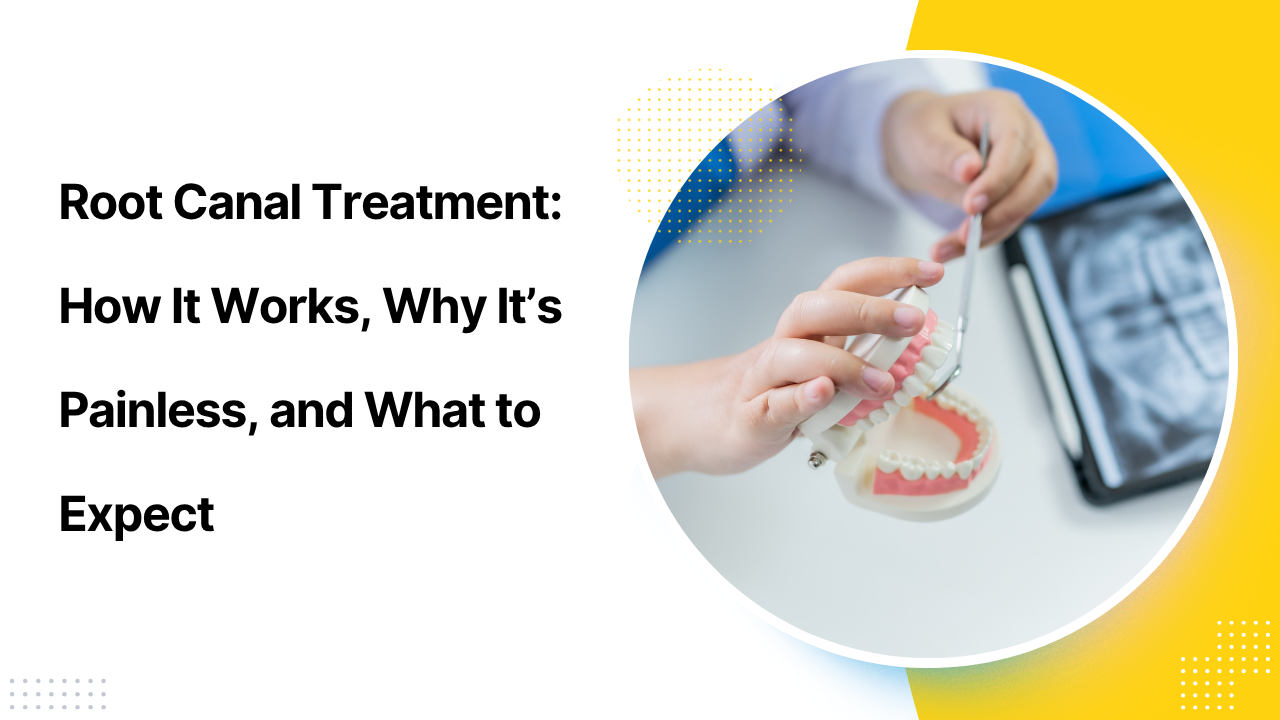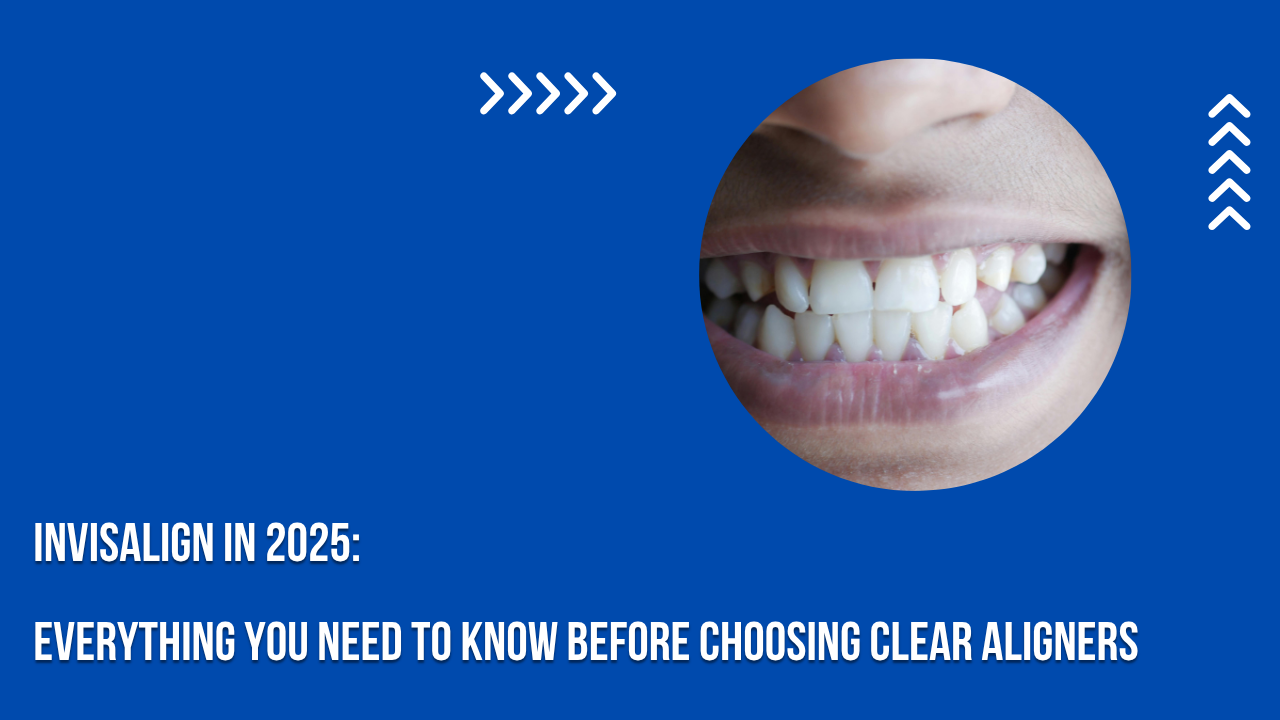When you hear the term “root canal,” do you immediately feel tense?
You’re not the only one.
Those words have developed a reputation that can make even the most courageous feel uneasy. The reality is that much of this fear stems from outdated beliefs, exaggerated tales, and, let’s be honest, a general anxiety about anything related to dental visits.
However, the truth is that a root canal today is far from what you might expect. It’s often just as comfortable as getting a filling. Really. The procedure is quick, efficient, and thanks to significant advancements in dental technology, it has become one of the best methods to alleviate pain and preserve your natural tooth.
So, let’s take a moment—just you and me—and go through the entire root canal process together. I’ll explain it in simple terms, without any scary jargon or complicated language. Just straightforward, reassuring information.
Does that sound good? Let’s get started.
First—Why Would You Even Need a Root Canal?
Let’s begin with the fundamentals.
Each tooth contains a soft tissue known as the pulp, located at its center and safeguarded by layers of hard enamel and dentin. The pulp houses the tooth’s blood vessels and nerves, serving as its vital support system.
However, the pulp can sometimes become infected due to:
– Severe tooth decay
– Cracks or chips in the tooth
– Multiple dental treatments on the same tooth
– An injury, even if there are no visible signs of damage
When the pulp is inflamed or infected, it can cause significant pain. This discomfort may be intermittent or feel like a constant pressure. The tooth may also become sensitive to hot or cold temperatures, or even to touch. Regardless, it’s an issue that should not be overlooked.
This is where a root canal procedure comes into play—to eliminate the infection, alleviate the pain, and preserve your natural tooth in its proper place.
So What Happens During a Root Canal?
Let’s go through this process step by step. Instead of picturing a medieval torture device, think of a sleek, modern dental chair, effective numbing gel, and advanced tools that look like they belong in a tech lab.
Step 1: Diagnosis
The process begins with a check-up. If your dentist suspects an issue, they may take a digital X-ray or a 3D scan. These images provide a detailed view of your tooth’s interior, including the roots, pulp, and any signs of infection. The scans are highly detailed, allowing the dentist to understand the situation and the extent of the problem.
Step 2: Numbing the Area
Now, let’s address the concern about pain. Will it hurt? The answer is no, not during the procedure. Before starting, your dentist will apply a local anesthetic to numb the area around the affected tooth. You might feel a slight pinch when the anesthetic is administered, but after that, you’ll only feel pressure, not pain. Many people find that their fear of pain is worse than the experience.
Step 3: Creating a Small Opening
Once you’re numb and comfortable, your dentist will create a small opening in the top of your tooth to access the infected pulp inside. Think of it as opening a tiny door to remove the source of the problem.
Step 4: Cleaning Out the Infected Pulp
Next comes the thorough cleaning. The dentist uses very fine instruments—similar to tiny brushes—to extract the infected pulp from the root canals of your tooth. This step requires precision, and with tools like rotary endodontics (high-speed, motorized instruments), the process is quicker and more efficient than ever. These tools allow for a more thorough cleaning in less time, resulting in a shorter appointment for you.
Step 5: Disinfection
After removing the infected material, your dentist disinfects the inside of your tooth with special solutions. In some modern clinics, they may even use laser disinfection, which sounds advanced because it is. Lasers can eliminate bacteria from areas that traditional tools might miss, leading to a cleaner tooth, reduced risk of reinfection, and faster healing.
Step 6: Sealing the Tooth
Now that your tooth is clean and dry, it’s time to seal it. The dentist fills the root canals with a rubbery material called gutta-percha. Don’t let the name worry you—it’s a safe, flexible substance that fills the space and prevents bacteria from re-entering. This step is crucial as it secures everything in place and helps avoid future issues.
Step 7: Closing the Top
Once the interior is sealed, the dentist will apply either a temporary or permanent filling to close the gap in your tooth.
Suppose the tooth is located at the back or experiences significant pressure while chewing. In that case, you will likely require a crown, which is essentially a protective cap that encases the entire tooth to maintain its strength and integrity. This procedure typically takes place during a follow-up appointment. After the crown is placed, your tooth will be fully functional, allowing you to chew, smile, and laugh as you did before.
The Cool Tech That Makes It All Easier
One of the greatest advantages of contemporary root canals is the technology involved. Here’s a brief overview of some of the equipment that makes current root canals seem much less daunting.
| Technology | What It Does | Why It’s Awesome |
| Digital X-rays | Takes clear images in seconds | Less radiation, faster diagnosis |
| Cone Beam CT Scans | Creates 3D images of your tooth and root canals | Helps your dentist see everything clearly |
| Rotary Instruments | Motor-powered tools that clean the canals | Faster, more comfortable treatment |
| Apex Locators | Measures the length of the canals electronically | Reduces guesswork, improves accuracy |
| Laser Disinfection | Kills bacteria using focused light energy | Deep cleaning and better sterilization |
| GentleWave System | Uses fluid and sound waves to clean the root canals | Super gentle and extremely thorough |
What It Feels Like After the Root Canal
What can you anticipate after leaving the dental office?
You may experience some soreness or tenderness for a day or two, which is completely normal. Your jaw might feel a bit fatigued from being held open, and the area that was treated could be sensitive, particularly if there was significant inflammation.
The important thing to note is that the pain from the infection has subsided. Any discomfort following the procedure is typically manageable with over-the-counter pain relievers. Most individuals return to their normal activities within a day. Just remember to take it easy, refrain from chewing on the treated side until your crown is placed, and adhere to your dentist’s instructions. It’s that simple.
Root Canal? It’s Not What You Thought
Let’s get straight to the point.
For many years, the thought of a root canal has frightened people, but the truth is quite different. It’s one of the most commonly misunderstood dental treatments.
Root canals don’t inflict pain; they alleviate it. They don’t take an eternity—most can be completed in just one or two appointments. And they don’t signify the end of your tooth; rather, they represent a new beginning.
Thanks to modern technology, techniques, and care standards, root canals are:
- Fast
- Accurate
- Comfortable
- And highly effective
So, the next time someone mentions that you might need a root canal, try to stay calm. You now understand what it entails—and that knowledge is half the battle.
If you’ve been advised to undergo a root canal or are dealing with ongoing tooth discomfort, seeking professional care in a comfortable environment is crucial.
At Dr. Varun’s Smile World, we utilize cutting-edge technology alongside a compassionate, patient-centered approach to ensure your dental procedures are seamless, relaxing, and successful. Whether you need a root canal or a regular check-up, you can trust that you’re in capable and experienced hands.




